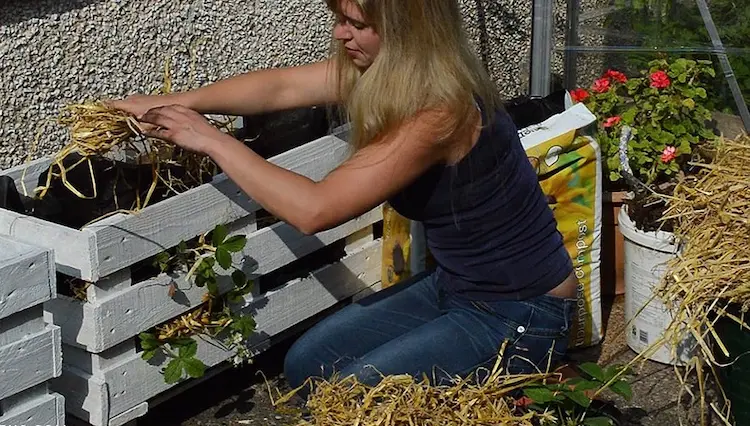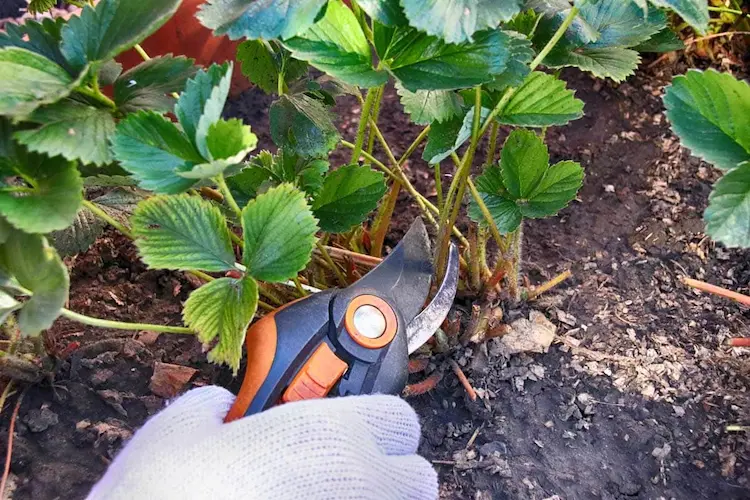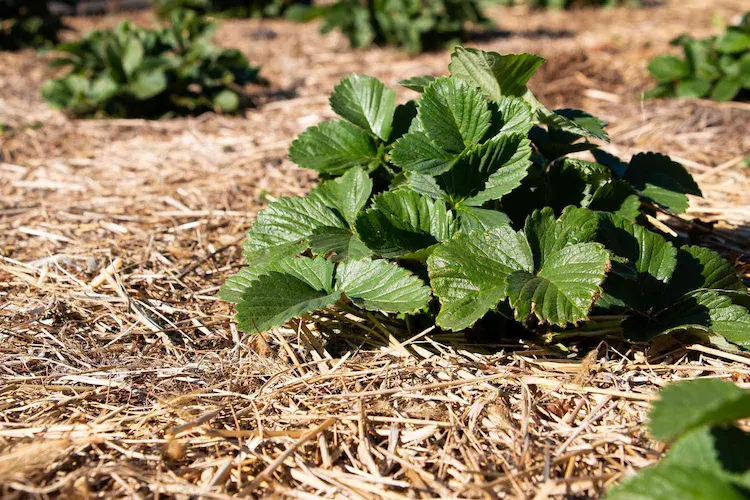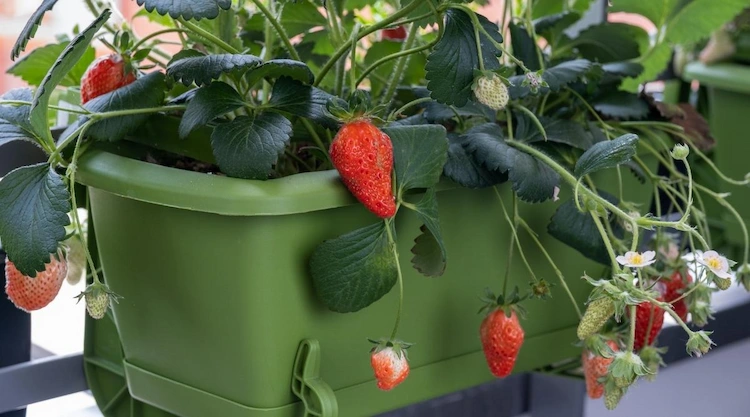Everyone loves strawberries. With proper care, you can enjoy the delicious fruits for a long time. Your strawberry plants will benefit from some protective measures to help them survive the coldest months of the year. Learn how to overwinter strawberries from this post.
Wondering how to overwinter strawberry plants? Whether you grow them in containers, a raised bed, or in the ground, it’s important to know how to properly care for strawberries over the winter. To prepare plants for winter you need to follow a few simple steps. We will help with tips and instructions.
Why Take Protective Measures for the Winter Months?
In regions where winter temperatures fall below 14F/-10C degrees, you need to take some protective measures for your strawberry plants. With a little preparation, you can protect your plants from the cold of winter so they stay healthy after the dormant period.
- Overwintering your strawberries properly can help prevent damage to next spring’s buds.
- Root damage is caused by freezing and thawing and if you protect the roots well you will avoid damage to the plants.
- Keeping the moisture is important, because it is necessary to keep the plants from drying out.
How to Overwinter Strawberries?
Here we show the steps that will help you take good care of the plants and keep them healthy. Even for beginners, it will be easy to learn how to properly care for strawberries after harvesting.
Renew Your Plants
After harvesting, the plants that will overwinter need to be renewed. This includes pruning the foliage and thinning. It is particularly important to cut off all damaged leaves. You can also use a lawn mower to cut off all the foliage, but be sure not to mow more than a week after the last harvest so you don’t damage the new leaves. Use clean, sharp pruning shears to trim the foliage to an inch or two above the crown.
Remove any damaged or diseased strawberry plants. Remove runners if necessary. This is best done by hand. When thinning the plants, make sure that the rows are about 11 inches/30 cm wide and 23 to 35 inches/60 to 90 cm apart between them.
Fertilize the Strawberry Plants
It is recommended to fertilize strawberry plants at least a month before the first frost. Apply the fertilizer between the plants. Water well. Homemade compost or well-rotted manure are ideal for strawberries as they provide all the nutrients they need.
Water Strawberries until the First Frost
During cold months when plants are dormant, additional watering is not necessary. But before winter hits, keep watering until the first frost. If there is no rain, water an additional inch per week. Do not water when frost is imminent because the water will freeze in the soil and damage the roots.
Also read: When to Bring Dipladenia Indoors in Winter? The Best Tips to Protect the Flower from the Cold
Apply Mulch as a Protective Layer
Once you have prepared the strawberry plants for winter, the final step is to apply mulch. Applying mulch provides an insulating layer. This keeps the plants evenly cold during temperature fluctuations. Mulch also helps retain moisture.
To apply mulch, sprinkle it in loose handfuls around and over the plants. The pieces of straw or pine needles should dissolve as they fall, creating airy piles rather than solid clumps. Bury all visible foliage completely under a continuous blanket of mulch along the entire row or to the edges of the beds. This will properly protect the plants.
Also read: Overwintering Mandevilla: This Is How to Care for Laxa, Splendens and Sanderi Varieties in Fall
Overwinter Strawberries in Containers
Strawberries that are grown in containers also need suitable winter protection.
- One of the best and easiest options is to place the container in a larger container and insulate the space with leaves or straw.
- You can also place the container on the floor next to a heated wall for proper wind protection. This way you can protect it from the winter wind. Insulate the exposed sides of the container with mulch, leaves, or straw.
- Simply bury the container in the ground. The surrounding soil insulates the roots over the winter.
- If it gets too cold in the winter, place the container in an unheated shed or garage to overwinter. Since the plants are dormant in winter and don’t need light, a darker place is also fine. The plants need a little water every few weeks to prevent the roots from becoming too dry.
Note: Do not place the container in a heated room and do not try to cultivate strawberries as houseplants, because strawberries need the cold winter dormancy to properly trigger new fruiting.
Also read: Prune and Overwinter Eucalyptus: What Should You Pay Attention to in Fall?






